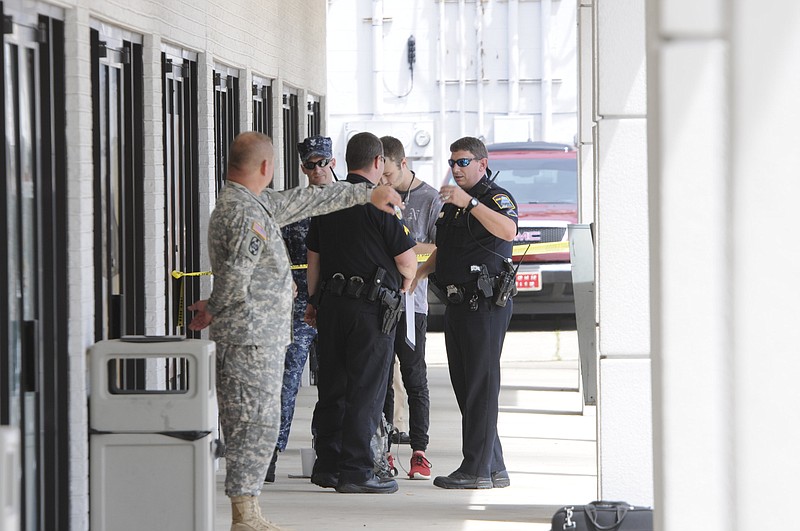Photo Gallery
Haunted House
The annual EMOBA Haunted House is busy scaring people for 2 weeks out of the year...
The U.S. Navy will put armed sailors at recruiting centers across the nation in the wake of the July 16 attack in Chattanooga, a Navy spokesman confirmed Friday.
The personnel will be armed with both lethal and non-lethal weapons and will be stationed at recruiting centers across the nation in the coming months, Capt. Jack Hanzlik said.
The move is one of several changes the Navy has made to security and policy after the attack a year ago, when a 24-year-old gunman opened fire on a recruiting center on Lee Highway - injuring one Marine - before driving to the U.S. Naval and Marine Reserve Center on Amnicola Highway, where the shooter killed four Marines and mortally wounded a Navy sailor.
"The arming of personnel at these facilities provides both a deterrent value and a defensive capability against potential attacks," Capt. Ray Benedict wrote in a Navy statement.
Since the attack, the Navy has also equipped recruiters with a smartphone app that allows them to quickly warn all other nearby recruiters of an attack, committed $80 million to make physical changes to recruiting centers, assigned anti-terrorism officers to recruiting districts, and created new active shooter and anti-terrorism training.
Hanzlik said the changes are part of the Navy's overall effort to improve security amid the rising threat of domestic attacks, but said that the July 16 attack added urgency to the process. Within weeks of the attack, the Navy placed armed personnel at all 71 Navy Operational Support Centers in the country, including the one on Amnicola Highway.
"I think many of these things would have happened, in the course of a year or two, anyway, given what we're seeing occur in the United States today," he said. "Chattanooga certainly was a stimulus to accelerate that change."
There are about 1,300 Navy recruiting centers across the nation, and the $80 million will be used to "install access controls, visual identification systems and perform physical changes to some buildings," Benedict wrote in his statement.
Additionally, personnel at 70 recruiting centers have been "temporarily relocated" because the sites' layouts would make it difficult for personnel to escape in the event of an attack, Benedict wrote.
The smartphone app that recruiters can now use is commercially available, Hanzlik said, and allows recruiters to warn others immediately, within a certain radius.
"It's a one-touch thing," he said.
The Navy also created new anti-terrorism training that is focused on facilities that, like recruiting and reserve centers, are often located in a civilian community, rather than on a military base.
"Most of our curriculum is built for facilities that are on Navy bases," Hanzlik said. "They're built for ships and squadrons. In the past they have not been focused on facilities like the [Navy Operational Support Center], which is really in the community."
Part of that training requires local Navy leaders to coordinate with local law enforcement and emergency personnel on a response plan well before any sort of threat or attack.
"In Chattanooga, local law enforcement, fire department and ambulances all responded amazingly quickly," Hanzlik said. "That kind of response is what we want to ensure happens in any crisis situation across the United States. And the only way you can make sure that it does is to make sure you have an exercised plan."
All Navy personnel are also required to go through active shooter training within 90 days of reporting for duty, followed by annual refresher courses.
The July 16 attack in Chattanooga has also prompted changes from the Department of Defense.
In May, Department of Defense Secretary Ash Carter said the Pentagon was developing a way to more quickly warn military installations of a nearby attack, and said that the department would spend an extra $100 million on protecting military personnel.
And just this month, a spokesperson with the Department of Defense said the DoD had "revised its arming policy to further specify commanders' authority to include use of privately owned and government weapons both on and off installations."
Contact staff writer Shelly Bradbury at 423-757-6525 or sbradbury@timesfreepress.com with tips or story ideas. Follow on Twitter @ShellyBradbury.


